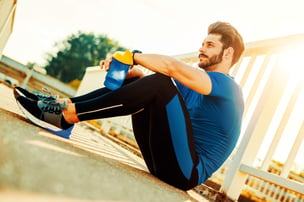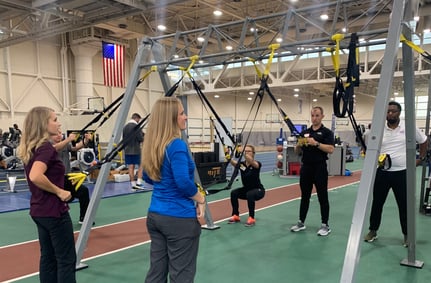 When it comes to athletic performance and recovery, one advancement in recent years has been compression clothing. From professional athletes to fitness enthusiasts, compression garments have become a staple in many wardrobes. But what exactly is the science behind compression clothing, and how does it impact our bodies during exercise and recovery? Let's dive in and explore the world of compression wear.
When it comes to athletic performance and recovery, one advancement in recent years has been compression clothing. From professional athletes to fitness enthusiasts, compression garments have become a staple in many wardrobes. But what exactly is the science behind compression clothing, and how does it impact our bodies during exercise and recovery? Let's dive in and explore the world of compression wear.
The Science Behind Compression Clothing
Compression clothing works by applying pressure to specific parts of the body, typically the limbs, to improve blood circulation and lymphatic flow. This increased circulation can have several benefits for both performance and recovery.
- Enhanced Blood Flow: During exercise, muscles require a steady supply of oxygen-rich blood to perform at their best. Compression garments help to improve blood flow by constricting blood vessels, which in turn increases the velocity of blood as it circulates through the body. This enhanced blood flow can lead to improved endurance, reduced fatigue, and enhanced overall performance.
- Reduced Muscle Oscillation: Compression clothing has an ability to reduce muscle oscillation, or the small vibrations that occur in muscles during movement. By providing external support to muscles, compression garments help stabilize them, reducing the amount of energy expended during exercise and minimizing muscle fatigue.
- Improved Recovery: By increasing blood flow and reducing muscle oscillation, compression garments can help to speed up the recovery process following intense exercise. This can lead to reduced muscle soreness and stiffness, allowing individuals to bounce back more quickly and continue training at a high level.
- Temperature Regulation: Some compression garments are designed to help regulate body temperature during exercise. By wicking away sweat and moisture from skin, these garments can keep the body cool and comfortable and prevent overheating during intense workouts.
Selecting Compression Gear
When selecting compression clothing, it's important to consider factors such as fit, material, and intended use. Compression garments should fit snugly against the skin without being uncomfortably tight, and they should be made from breathable, moisture-wicking fabrics to maximize comfort during exercise.
Different types of compression clothing may be better suited to specific activities. For example, compression sleeves or socks are often used during running or cycling to improve circulation in the legs, while compression tops can provide support to the upper body during activities like weightlifting.
Compression clothing offers a range of benefits for athletes and fitness enthusiasts, from improved performance to enhanced recovery. By understanding the science behind compression wear and choosing the right garments for their needs, individuals can elevate their training and optimize their health and fitness. So, whether you're hitting the gym, pounding the pavement, or simply looking for a more comfortable way to recover after a tough workout, consider incorporating compression clothing into your routine.


 Everyone is always wanting to know what the top trends for health and fitness each year are and in 2023 we are seeing concepts we can get on board with and fully support! Check out these tops trends and why we support and encourage our corporate fitness center members to adapt these trends.
Everyone is always wanting to know what the top trends for health and fitness each year are and in 2023 we are seeing concepts we can get on board with and fully support! Check out these tops trends and why we support and encourage our corporate fitness center members to adapt these trends.
 Variety is the spice of life, and that’s what we’ll have in town this week at our annual managers’ meeting. Each year we fly our management team to our headquarters in Indianapolis for professional development, collaboration, and networking. Our passionate team arrives from across the U.S. from different client settings and with varying personal interests and backgrounds. Their one commonality is their passion for serving their members, and we love the dialogue and collaboration that unfold when everyone gets together.
Variety is the spice of life, and that’s what we’ll have in town this week at our annual managers’ meeting. Each year we fly our management team to our headquarters in Indianapolis for professional development, collaboration, and networking. Our passionate team arrives from across the U.S. from different client settings and with varying personal interests and backgrounds. Their one commonality is their passion for serving their members, and we love the dialogue and collaboration that unfold when everyone gets together.
.jpg?width=404&name=GettyImages-1132973672%20(1).jpg) Fitness Fads vs. Classic Methods
Fitness Fads vs. Classic Methods What does work?
What does work?